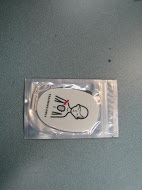
This is a continuation of some of the first aid acronyms that you should keep in mind because first aid is continually getting improved with each passing day. Knowing these acronyms by heart will go a long way in improving your techniques, making it imperative to learn while on the go. The acronyms range from the very simple to some of those which are complicated. For this reason, I have included a brief explanation of what some of the acronyms entail to allow for better comprehension.
1) NKDA: No known drug allergies
The first of first aid acronyms in this article, NKDA is used when the doctor is administering medication, and needs to know whether the patient suffers allergies following specific medication.
2) PEARL: Pupils equal and reacting to light
This is one of the first aid procedures carried out on victims to establish whether there could be any head injuries during a general assessment. It is all about looking at whether the pupils are equal in size as well as whether or not they change in size when light is illuminated.
3) PMDI: Pressurised metered dose inhaler
This is a device that is used by patients suffering from asthmatic attacks. It delivers medication by making use of a propellant spray. There are procedures that one must follow in order to correctly use the inhaler.
4) PRF: Patient report form
This is one of the most common first aid acronyms, and which is basically a form that contains details that are pertinent to the patient. It is important that these details are as accurate as possible to allow for proper diagnosis and treatment.
5) PT: Patient
6) TB: Tuberculosis
7) TIA: Transient Ischemic Attack
This is one of the first aid acronyms used to describe a type of stroke. It is characterized by the stoppage of blood flow to any part of the brain, albeit briefly. The result is that the patient will show symptoms that are associated with stroke. The condition is very serious and needs to be addressed with the seriousness that it deserves.
8) VF: Ventricular fibrillation
This is a condition that refers to an extreme case of an abnormal heart rhythm that can be very fatal if the patient is left unattended. This manifests itself with irregular contraction of the heart muscle located in the ventricles (the lower chambers that are located in the heart). This causes the ventricles to contract rapidly. If you have done CPR training, this is a term that you may have come across. Other first aid acronyms that are used for this condition include V-fib and VF.
9) VT: Ventricular tachycardia
This is a type of tachycardia, a very fast heartbeat that begins at the bottom chambers, the ventricles. It is characterized by more than 100 beats every 60 seconds and is also accompanied by irregular heartbeats, sometimes happening in quick succession. This is yet another life-threatening condition which must be addressed as soon as possible. This condition is indicated by two first aid acronyms: either V-tach or VT.
